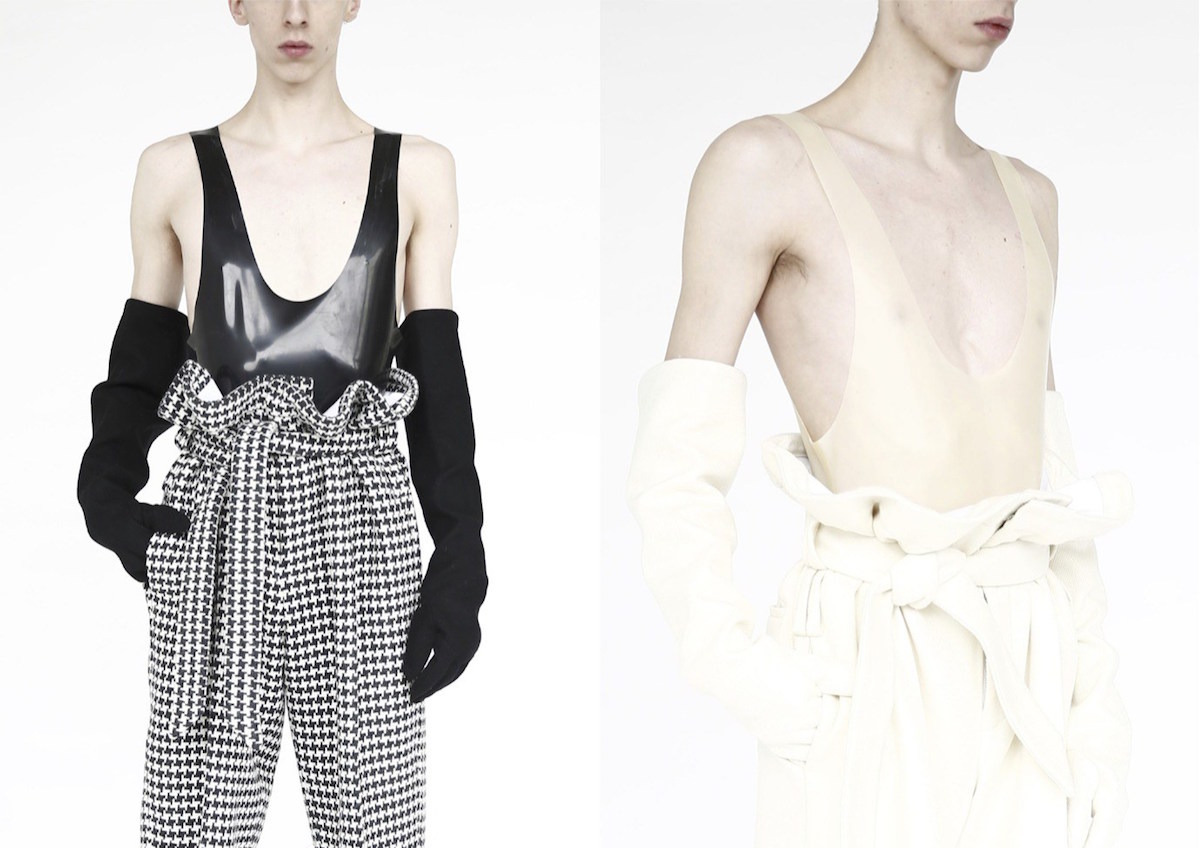Queer To Measure: An Interview with Designer Abzal Issabekov
Culture — 16.11.16
Words by Desislava Todorova
Visuals provided by Abzal Issabekov
Polaroids shot by Anton Gottlob

Partying with Abzal Issabekov couldn’t be more fun. We somehow end up in a room in Hoxton together when he screams my name once he realises we’ve spoken a few days earlier over emails. He’s vibrant, engaged and loud, which I come to recognise in his work. A Recent graduate from MA Menswear at Central Saint Martins, the young designer’s Soviet roots took him far away from the homeland in his quest for reaching the ideal expression of masculinity. Often referenced as fetishizing, his work brings together the essence of the male and the female – strong, sharp, seductive and emotive. Deeply influenced by queer culture, his collection has been a strong self-revelation that captivates with its unorthodox darkness.

How did you choose fashion as a creative endeavour and why CSM? How has London influenced your work?
Well, fashion came to my life quite recent, but the craft of “making” was started at a quite early age. My mom used to be a seamstress back in the Soviet Union times, so she taught me the skill, but “fashion” came a bit later, when I moved to Almaty, the biggest city in Kazakhstan to do my BSc in Accounting and Marketing. I was born in a small city of Kazakhstan, called Pavlodar, and moved to a bigger one aged 17.
In Almaty, I met like-minded people and the understanding that you can earn money doing “clothes” came upon me, so I decided to try my luck and apply to fashion schools after completing my first Bachelor. I did and got accepted to Parsons, in New York. I learned how to do tailor-made clothing and all the techniques while assisting in an atelier, called Primo, located in Long Island, NY.
After that, I applied to MA at Central Saint Martins, because many of my fashion “heroes” graduated from this course and also because of Louise Wilson. I had an interview with her, and she accepted me, sadly she passed away several days later after that. But I got convinced that I have to do it, and Fabio Piras, the new course leader, pushed me to my limits and made me understand who I am and what I want to project with my designs.
Currently, I’m a RTW designer at Céline.


What was the main inspiration for your graduate collection (cultural, music references)? What’s your take on modern tailoring and why did you choose it as your design direction?
The soul of the collection: the idea of dominance and submission in gay culture.
I guess, my whole obsession with it came around four years ago, but it started probably after watching “Queer As Folk”, the American Version, back in the beginning of 2000s. It was still a dial-up internet time in Kazakhstan, took almost 1-2 days to load a 30 minutes episode. But this show really opened my eyes to the whole gay world and that I’m not “the only one” who is attracted to the same sex.
I know, many people do say that the show is based on gay stereotypes and full of clichés, but for a 14-year-old boy growing up in my country, it felt like an “enlightenment”. So my first time seeing that world of gay imagery was QAF, I think.
The research was quite extensive, but at the same time it was not like doing “research”, it was more like curating all that’s available and trying to make sense of it in my way. It all started with Robert Mapplethorpe’s work, so naturally, I went deeper into his world and 70’s New York, researching photographers like Peter Hujar, Mark Morrisroe and Hujar’s partner David Wojnarowicz’s work, and short Super 8MM films of Andy Warhol starring Joe Dallesandro. Understanding the vibe of the 70’s hedonism through reading Andrew Holleran’s “Dancer from the Dance” and the imagery of Jacques De Bascher’s and Karl Lagerfeld’s parties in Paris. Hal Fischer’s “Gay Semiotics” and watching movies like Pasolini’s “Salo” or Frank Ripploh’s “Taxi Zum Klo”. It was this great dive into this complicated and fascinating world of homosexuality.


What’s your take on the wave of Eastern Europeans in fashion and gender fluidity in tailoring?
I wanted to go against what was happening in menswear right now, like gender fluidity, womenswear as menswear, the post-Vetements madness, oversized silhouettes and all those Eastern Bloc influences. So this collection is really an ode to masculinity and tradition. I wanted to go back to craft and technique. It’s also about the skill that I process, which is tailoring, so I decided to make use of it. Many can make out-of-shape, blocky, boxy garments, but it takes years and years of training to make a tailored jacket—to understand male body and proportions.

What’s your dream collaboration? What’s next for you?
My dream collaboration would be working with Stefano Pilati, as I admire him and think that he is one of the most talented menswear designers alive.